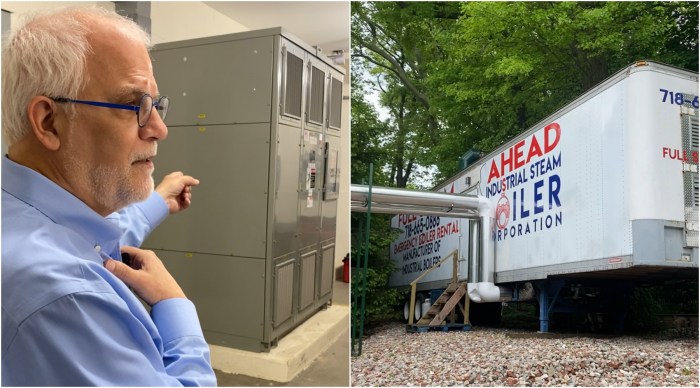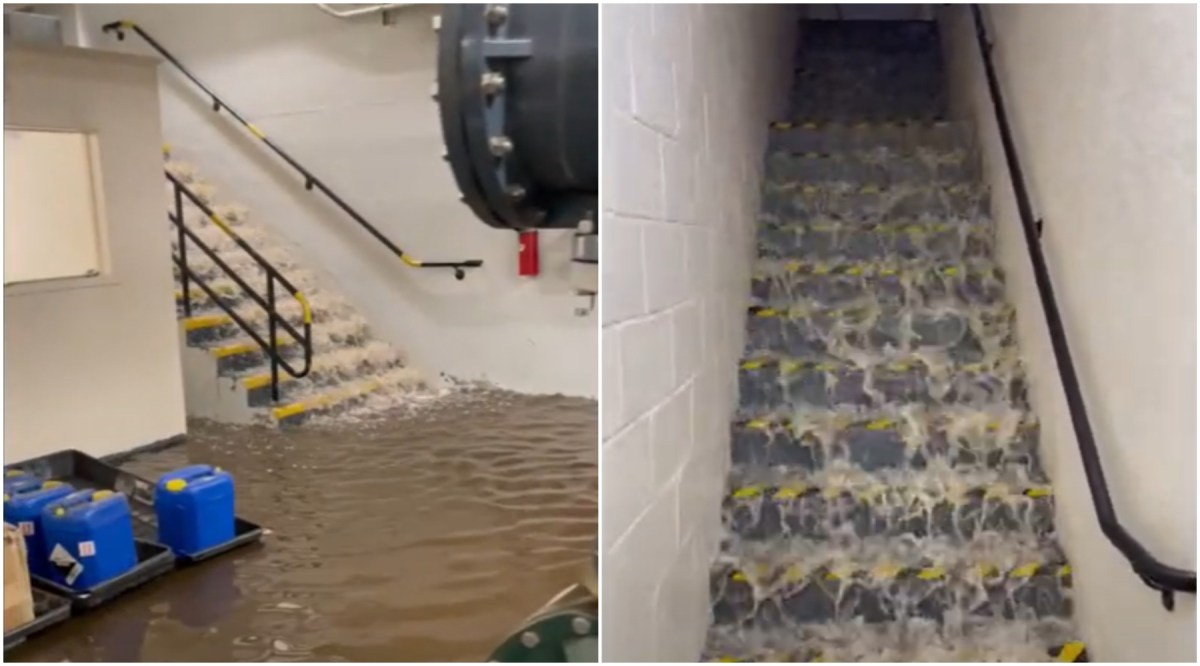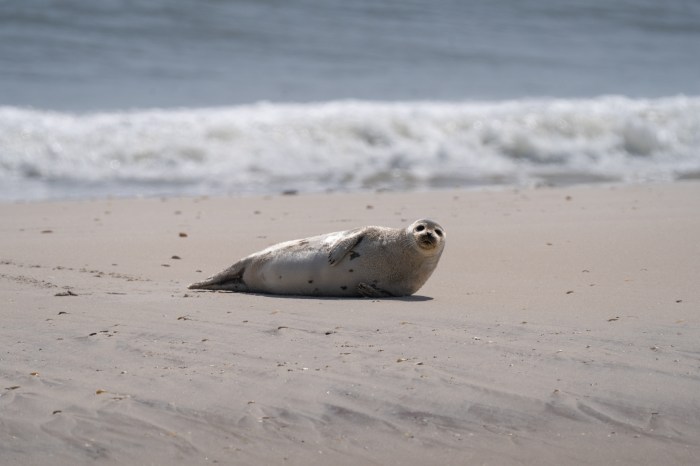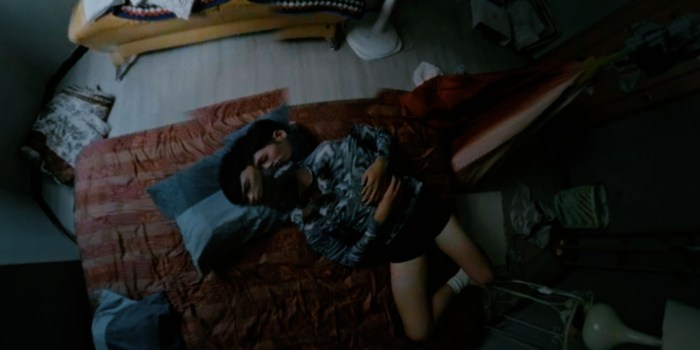Staff at Prospect Park Zoo is busy laying down the last coats of fresh paint and completing necessary repairs to exhibit buildings ahead of the zoo’s reopening on May 25, but the Wildlife Conservation Society (WCS) says the recovery work behind the scenes to prevent future flooding damage is “far from complete.”
The zoo was shuttered for eight months after it suffered severe damage to its facilities and infrastructure during Tropical Storm Ophelia last September, and close to $6.5 million has been spent to date to reopen.
During a recent tour of the zoo, Craig Piper, vice president and director of City Zoos for the Wildlife Conservation Society, explained to Brooklyn Paper that on Sept. 29, 2023, the 12-acre zoo was essentially underwater — some areas seeing six inches of flooding, others faced with several feet of water.
The basements and sub-basements were totally submerged in as much as 25 feet of water as storm sewers in the area reached full capacity, wiping out the zoo’s boilers and important networks, such as the Heating, Ventilation, and Air Conditioning (HVAC), electrical, and aquatic life support systems.
At the time of the flooding, the approximately 400 animals who call the Prospect Park Zoo home were unharmed as they were in their night houses, out of harm’s way. But once waters receded, zoo staff were in emergency response mode. With help from partnering city zoos, staff moved quickly to install emergency generators and fuel tanks around the park to ensure the safety and ongoing care of the animals.

WCS also had help from an emergency response crew of 25 people who worked alongside the 50-plus staff at the zoo — none of whom were laid off during the closure — to clear debris, clean, and disinfect. In some exhibitions, walls had to be ripped out and flooring replaced because of flood damage and potential mold growth.
More than half a year later, the zoo is back on the grid, and the primary electrical room has been relocated from a basement to ground level. It does, however, remain on a temporary heating system while a new location for boilers, previously in a basement, is found.
“It’s all connected by piping to our systems to distribute around the campus, and it will likely be in place for several years while we’re working on the long term restoration,” Piper said of the temporary boilers.
But none of the background issues should affect zoo-goers’ experiences when it reopens on May 25. Then, staff said, resident peacocks will be back on patrol, and the zoo’s fan-favorite sea lions will be eagerly awaiting some attention from the crowds.
There are also some new animals to watch out for, including a pair of southern Pudu, one of the world’s smallest species of deer, and a female Hamadryas baboon born during the closure on Oct. 18, 2023.
The risk remains
With a reopening date in place, Piper told members of the press on Tuesday that the Prospect Park Zoo is still working with partners in the city, state, and federal government on a full restoration and resiliency plan. He hopes the groups will be able to take more solid steps to prevent future flooding, which he notes is the real big picture issue at present.
“The biggest issue is the mitigation effort. How do we prevent future flood events? And the fundamental problem is this area of Brooklyn doesn’t have storm capacity to handle these types of events,” said Piper, recalling on the day of the deluge that “water was streaming in here from Flatbush Avenue and was coming up through all the drains.”
Piper believes improved stormwater retention in the area is key to avoiding future flooding disasters, adding that Prospect Park’s lake could hold the solution.
“It’s where you take the water, collect it and hold it, and discharge it at a rate the storm sewers can handle, because we can’t just increase the size of every pipe in the city,” said Piper. “It’s a shallow lake, it could be used as stormwater detention. There’s a real interest in looking at that as an option, because the neighborhood’s to the south of the park flood, because it goes from here to the lake and then out.”

Full restoration costs, not including mitigation measures, are estimated to be more than $20 million, according to the WCS. The group is relying on future FEMA recovery assistance funds to complete the long-term works after President Joe Biden issued a Federal Disaster Declaration for three New York counties, including Kings County, on Jan. 31 following a request from Governor Kathy Hochul.
“After a long recovery, Brooklynites will finally be reunited with their furry, scaly, and feathered friends at the Prospect Park Zoo,” Brooklyn Borough President Antonio Reynoso said ahead of the zoo’s reopening. “Thank you to Governor Hochul for securing the funds from the federal government to begin restoring this treasured Brooklyn institution. The September flooding which forced the Prospect Park Zoo to close to the public upended life for so many Brooklynites, and we must do everything in our power to combat climate change and to protect sites like the Prospect Park Zoo from the devastating effects of severe weather events.”
In the meantime, Piper conceded that the zoo is still at risk but said should future floods occur, it is in a better position to handle them.
“We’re doing a lot of things to minimize that risk, but there’s a risk,” he said. “We’d be able to keep the power going, which would allow us to keep pumping water out, but the key is changing the pattern of where the water goes.”

















